9 Species of Woodpeckers in Michigan (With Pictures)
Last Updated on
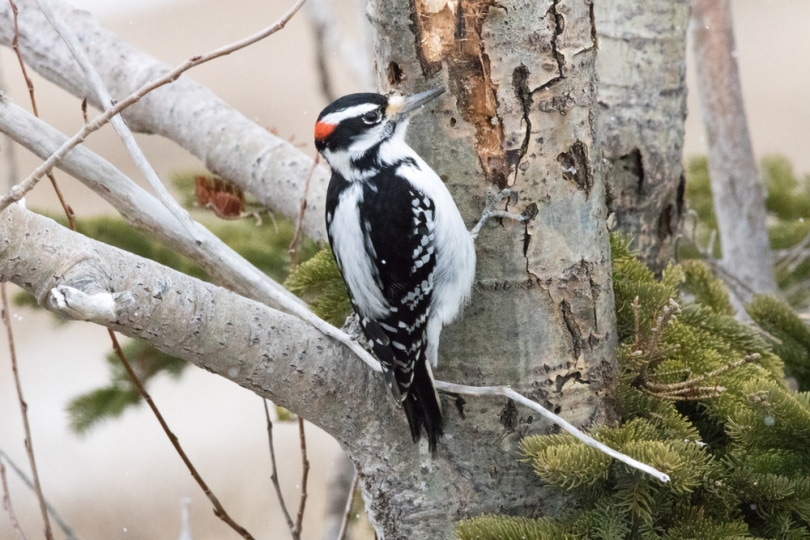
Of the nearly 240 woodpecker species in the entire world, only 23 of those birds are native to the United States.1, 2 To narrow it down even further, only 9 woodpecker species can be found in Michigan.3
You’ll start to hear woodpeckers drumming on wood in the late winter or early spring in Michigan. This is one of the most reliable signs of warmer weather, so you might have heard the thudding and are now wondering what kinds of woodpeckers are flying around. This list will go over each type of woodpecker found in the beautiful Great Lakes State. Let’s get started.

The 9 Species of Woodpeckers in Michigan
1. Downy Woodpecker

| Length | 5.5–6.7 inches |
| Weight | 0.7–1.0 ounces |
| Wingspan | 9.8–11.8 inches |
Of the only nine woodpeckers found in Michigan, Downy Woodpeckers are the most common and can be found throughout the entire state. They are also the smallest of all woodpeckers in North America.
Downy Woodpeckers are common at backyard feeders, and you can expect to see them regardless of what you put out. They enjoy peanuts, suet, mixed seeds, and black sunflower seeds. Because they don’t migrate, they are also prevalent during winter.
2. Hairy Woodpecker
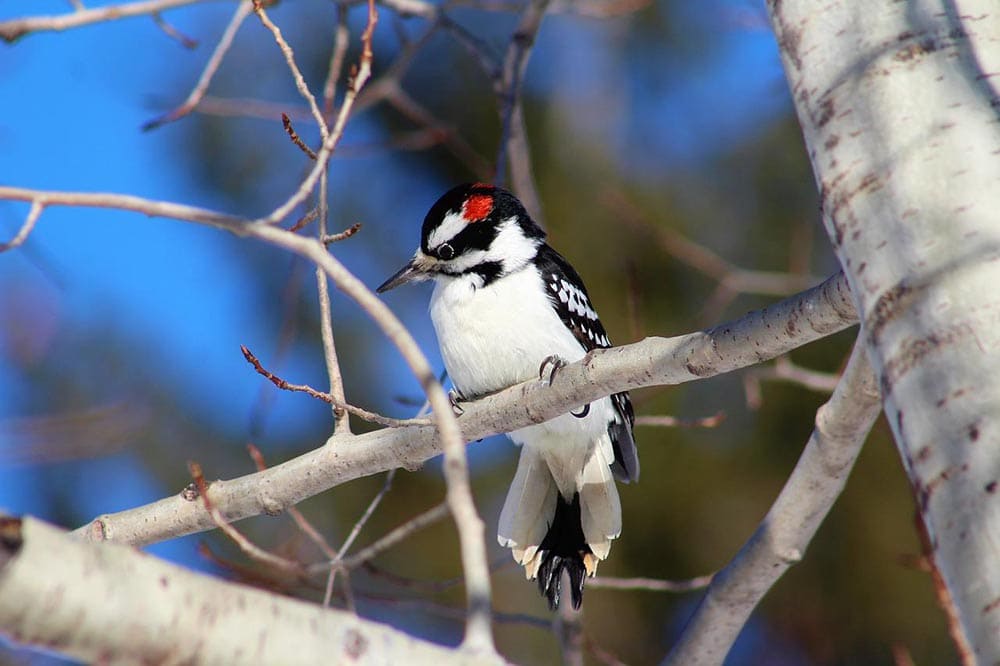
| Length | 7.0–10.2 inches |
| Weight | 1.4–2.4 ounces |
| Wingspan | 10.0–16.0 inches |
The Hairy Woodpecker is commonly mistaken for the Downy. Trust us, it can be hard to tell these two apart. They both have black and white plumage with a barred pattern across their wings. Both also have a red patch on the back of their heads. So, what’s the difference? Hairy Woodpeckers are a bit larger and have longer beaks.
Hairy Woodpeckers are year-round residents here along with the majority of the US. It is possible that you’ve seen them at the feeders, but you’ve probably mistaken them for a Downy Woodpecker instead.
3. Red-Headed Woodpecker
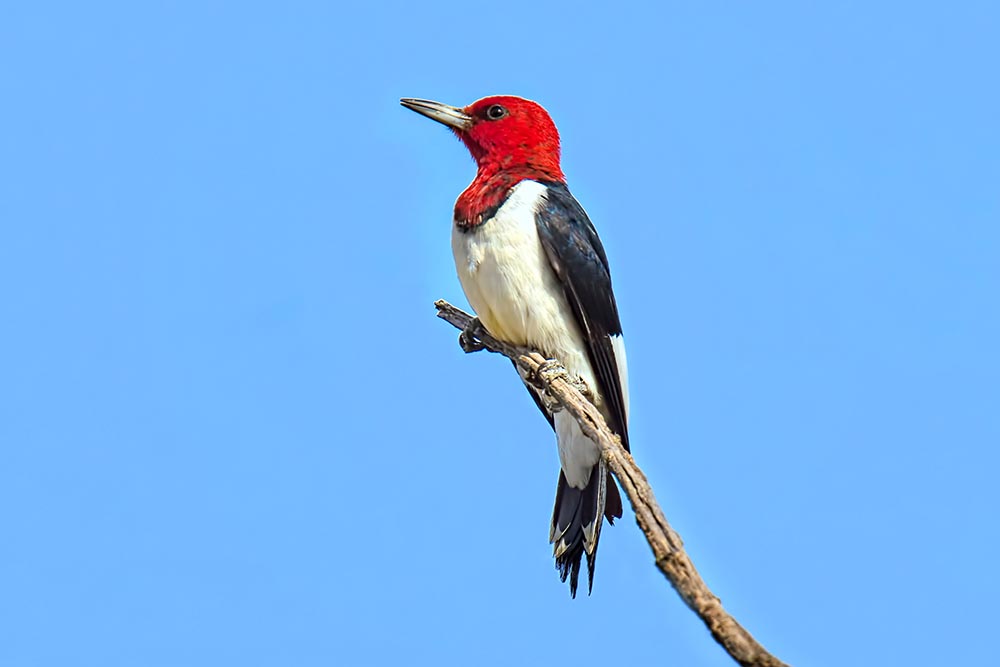
| Length | 7.1–9.1 inches |
| Weight | 2.0–3.0 ounces |
| Wingspan | 16.5 inches |
While they aren’t as common at bird feeders, the Red-Headed Woodpecker does commonly breed in Michigan. If you are lucky enough to spot one, you’ll likely see it darting between trees while searching for food in the holes of bark.
Red-Headed Woodpeckers feed on insects, seeds, and berries. They are skilled at catching flies as well. You can identify these birds by their bright red heads and black and white bodies. Unfortunately, their numbers are in decline.
4. Pileated Woodpecker

| Length | 15.8–19.3 inches |
| Weight | 8.8–12.3 ounces |
| Wingspan | 26.0–29.5 inches |
Pileated Woodpeckers rarely leave the state. They reside here year-round, although they are most common in the southeastern part of Michigan. Of all the woodpeckers in Michigan, these are the largest.
Pileated Woodpeckers will readily eat at your suet feeders, although you should try not to get disappointed if they don’t show up. They are incredibly hard to attract. However, should you see one, you can identify it by its crimson red crest and dark gray and white body.
5. Yellow-Bellied Sapsucker

| Length | 7.1–8.7 inches |
| Weight | 1.5–1.9 ounces |
| Wingspan | 13.4–15.8 inches |
Based on appearance alone, this one is a favorite among birdwatchers. Yellow-Bellied Sapsuckers are roughly the size of an American Robin but are easy to spot thanks to their red markings on their head and chin and touches of yellow on the breast.
Yellow-Bellied Sapsuckers often drill holes in maple and birch trees. Then, they stick their bills inside and use their tongues to consume as much sap as possible. They might not be regular visitors at your feeder, but you increase your odds by putting out suet cakes.
6. Northern Flicker
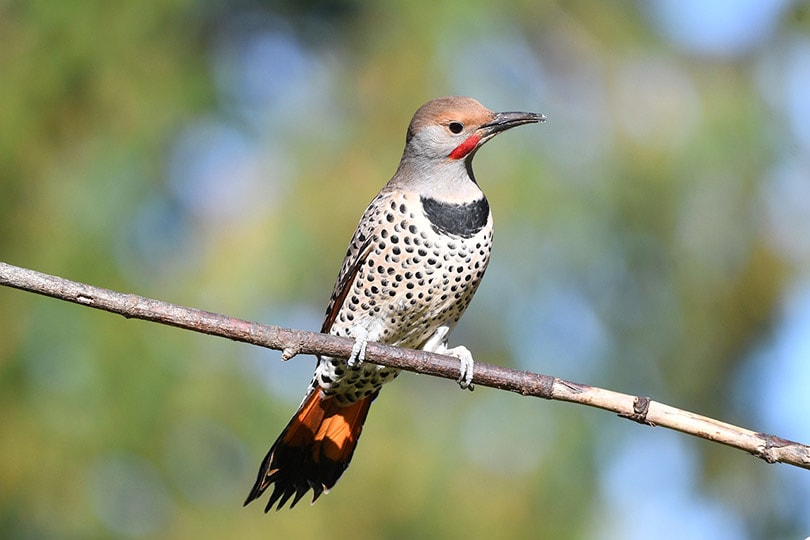
| Length | 11.0–12.2 inches |
| Weight | 3.9–5.6 ounces |
| Wingspan | 16.5–20.0 inches |
Northern Flickers are a type of woodpecker that will frequent backyards, but they still might steer clear of your feeders. These woodpeckers usually eat ants from the ground. They pick through dirt and leaves before picking them up with their tongues. They also eat berries, sunflower seeds, thistle, and other invertebrates.
While Northern Flickers do spend a good amount of time on the ground, that doesn’t mean they don’t drum on trees. Drumming on trees is a form of communication for them. They also prefer nesting in rotting trees, just like most other woodpeckers.
7. Black-Backed Woodpecker
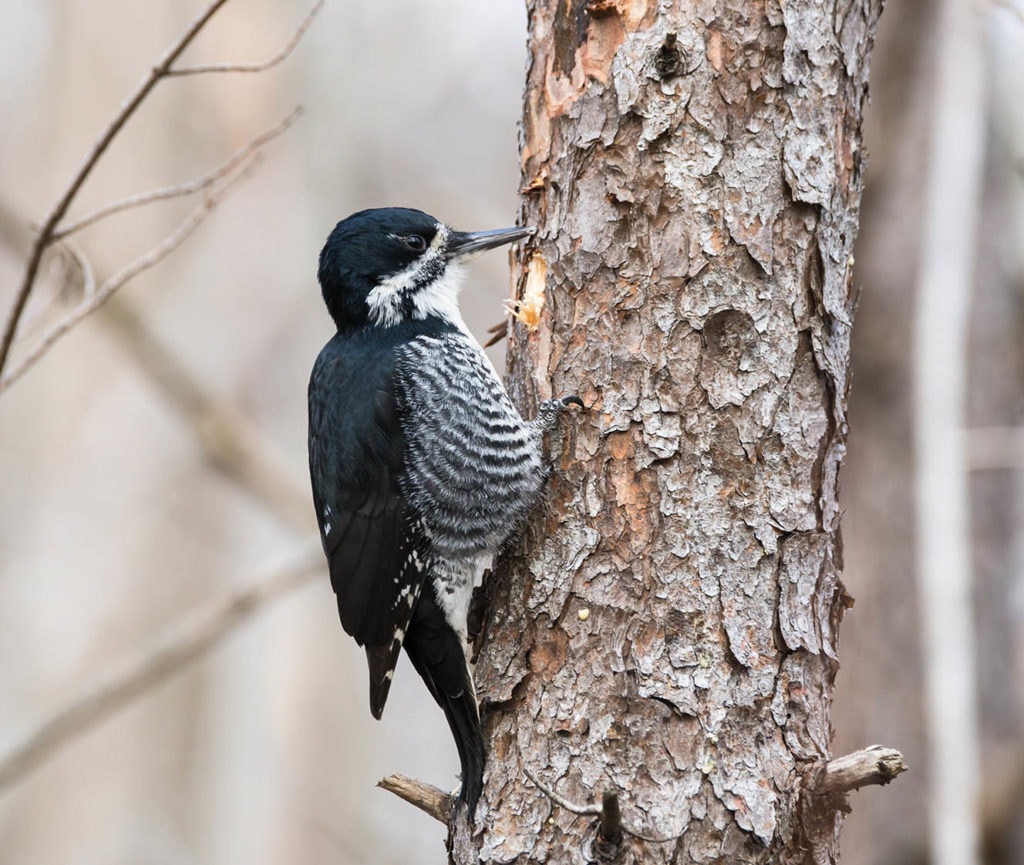
| Length | 9.0 inches |
| Weight | 2.0–3.0 ounces |
| Wingspan | 15.8–16.5 inches |
Another Michigan woodpecker on this list is the Black-Backed Woodpecker. These birds are really only found in the most northern parts of Michigan. They spend time here year-round and primarily feed on wood-boring beetle larvae.
Black-Backed Woodpeckers are the size of a robin and are mainly black with white underbellies. The males have yellow crowns, just above their long beaks. They find themselves naturally attracted to burnt forests, so if you’re looking for one, this is the best place to find them.
8. Red-Bellied Woodpecker
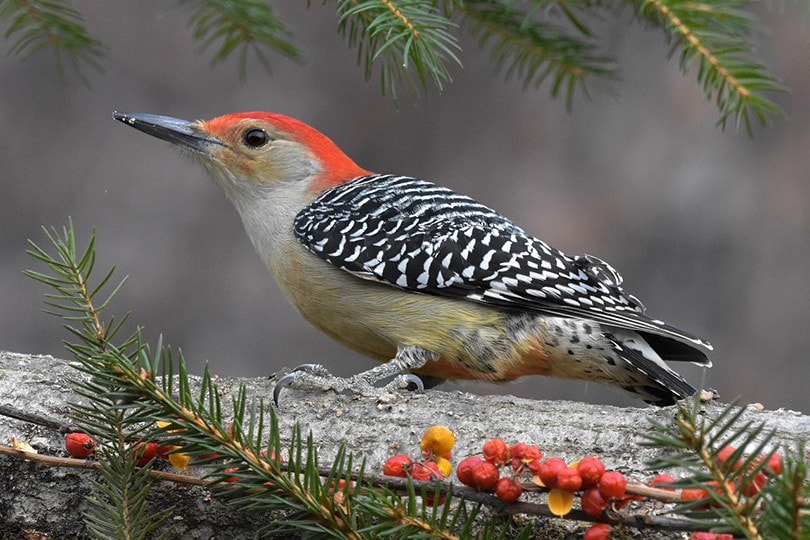
| Length | 9.5 inches |
| Weight | 2.0–3.2 ounces |
| Wingspan | 13.0–16.5 inches |
You can find the Red-Bellied Woodpecker in Michigan throughout the entire year. These birds are a bit bigger than the Downy Woodpecker—more similar in size to a Hairy Woodpecker.
Contrary to their name, Red-Bellied Woodpeckers don’t actually have a red belly. Instead, there is a touch of pale red on the back of the head in the shape of a mohawk. If you want to attract one of these woodpeckers, your best shot is to put out suet feeders.
9. American Three-Toed Woodpecker

| Length | 8.3–9.1 inches |
| Weight | 1.6–2.4 ounces |
| Wingspan | 14.6–15.3 inches |
The last woodpecker on our list is the American Three-Toed Woodpecker. While they mostly reside in Canada, they do come down to Maine, Michigan, and North Dakota from time to time. These birds enjoy hunting in burned forests where they can find lots of beetles to eat and trees to drum.
As you probably guessed, these woodpeckers only have three toes. However, you will have better luck identifying them by their coloring. They are mostly black but have white barring on their sides and back. The chest is white, and males will have a lemon-yellow crown.

Conclusion
If you’ve started hearing drumming outside in the late winter or early spring, it’s a sign that the woodpeckers are out and preparing for warmer weather. You might not be lucky to see every single woodpecker on this list in your backyard, but with enough luck and patience, you’ll be able to cross a few off your must-see list for birdwatching.
Featured Image Credit: S. McGrath, Shutterstock
About the Author Robert Sparks
Robert’s obsession with all things optical started early in life, when his optician father would bring home prototypes for Robert to play with. Nowadays, Robert is dedicated to helping others find the right optics for their needs. His hobbies include astronomy, astrophysics, and model building. Originally from Newark, NJ, he resides in Santa Fe, New Mexico, where the nighttime skies are filled with glittering stars.
Related Articles:
Monocular vs Telescope: Differences Explained (With Pictures)
10 Types of Hummingbirds in Arkansas (With Pictures)
8 Types of Hummingbirds in Nebraska (With Pictures)
5 Types of Hummingbirds in Idaho (With Pictures)
3 Types of Hummingbirds in Mississippi (With Pictures)
8 Types of Hummingbirds in Kansas (With Pictures)
5 Types of Hummingbirds in West Virginia (With Pictures)
5 Types of Hummingbirds in Ohio (With Pictures)
